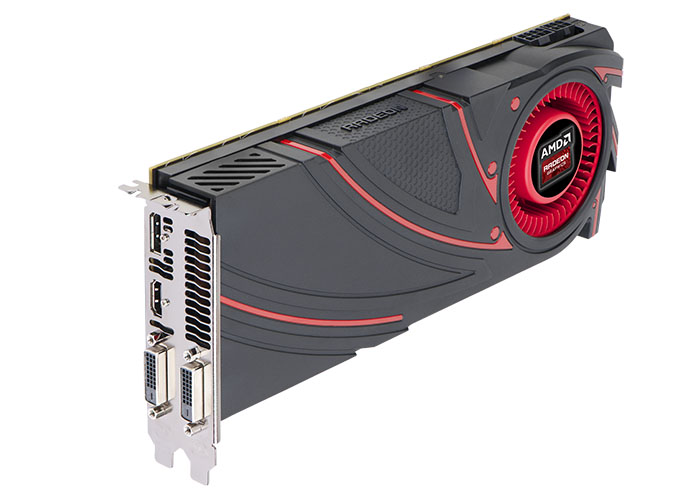Almost the same

You know how AMD launched the Radeon R9 290X graphics card a couple of weeks ago? Priced at a respectable $549 and able to match anything that can be thrown at it from Nvidia's side, it's a value-driven enthusiast card - if such a statement isn't oxymoronic.
But AMD rarely releases a single high-end GPU at one time. The Radeon HD 6970 and HD 6950 GPUs launched on the same day in December 2010, while the HD 7970 had the HD 7950 following soon after. Such proximal releases have historically been achieved by using the same base architecture for both headline GPUs.
It's no surprise that R9 290X is now followed by another GPU based entirely on the Hawaii GCN architecture. Radeon R9 290's the name and forcing Nvidia's high-end pricing hand is very much the game. Let's see how this second-rung Hawaii chip stacks up.
| GPU | Radeon R9 290X 4GB | Radeon R9 290 4GB | Nvidia GeForce GTX Titan 6GB | Nvidia GeForce GTX 780 3GB |
|---|---|---|---|---|
| Launch date | October 2013 | October 2013 | February 2013 | May 2013 |
| DX API | 11.2 | 11.2 | 11.1 | 11.1 |
| Process | 28nm | 28nm | 28nm | 28nm |
| Transistors | 6.2bn | 6.2bn | 7.1bn | 7.1bn |
| Approx Die Size | 438mm² | 438mm² | 551mm² | 551mm² |
| Processors | 2,816 | 2,560 | 2,688 | 2,304 |
| Texture Units | 176 | 160 | 224 | 192 |
| ROP Units | 64 | 64 | 48 | 48 |
| GPU Clock/Boost (MHz) | up to 1,000 | up to 947 | up to 876 | up to 902 |
| Shader Clock/Boost (MHz) | up to 1,000 | up to 947 | up to 876 | up to 902 |
| TFLOPS | up to 5,632 | up to 4,849 | up to 4,494 | up to 4,156 |
| Memory Clock (MHz) | 5,000 | 5,000 | 6,000 | 6,000 |
| Memory Bus (bits) | 512 | 512 | 384 | 384 |
| Max bandwidth (GB/s) | 320 | 320 | 288.4 | 288.4 |
| Power Connectors | 8+6-pin | 8+6-pin | 8+6-pin | 8+6-pin |
| TDP (watts) | 250 | 250 | 250 | 250 |
| GFLOPS per watt | 22.52 | 19.40 | 17.98 | 16.62 |
| Current price | $549 | $399 | $999 | $499 |
Architecture analysis - R9 290
We're not going to bore you with lots of pictures and graphs illustrating the differences; there is only one from an architectural point of view. Remember how the R9 290X employs 44 Compute Units spread over four blocks? R9 290 (non-X) is hamstrung by the loss of four of these CUs - reducing the total to 40. As each block is home to 64 shaders and 16 texture units, the lesser Hawaii chip has 2,560 processors and 160 TUs - or about 10 per cent fewer than the full-fat X-rated model. And that's it, as the GPUs are otherwise functionally identical.
A mere reduction in processing power isn't usually enough for effective market segmentation. Following a time-honoured traditional of reducing/disabling cores in concert with lower GPU frequency, R9 290 is programmed to reach a peak speed of 947MHz, compared to 1GHz for the big boy. Factoring in these two variables means that GFLOPS and texturing throughput drops by approximately 14 per cent though, rather helpfully, the backend processing ability - ROPs, memory-bus width, etc. - is left untouched.
Back-of-the-envelope calculations suggest that R9 290 will be around 10 per cent slower than the headline Radeon act. This should translate to high-resolution gaming performance that's on a par with the $499 GeForce GTX 780 - the GPU very much in the R9 290's sights.
AMD's aggressive pricing structure enables the R9 290 to be launched at $399 (which we're told will translate to £320 inc. VAT), thus putting obvious pressure on Nvidia to further move the pricing of its own high-end cards, having already made cuts earlier last week. We'll skip taking a look at the reference card because it is identical to the R9 290X, save for the BIOS-toggling switch having identical profiles in both positions. It's straight to the benchmarks, Tonto.









